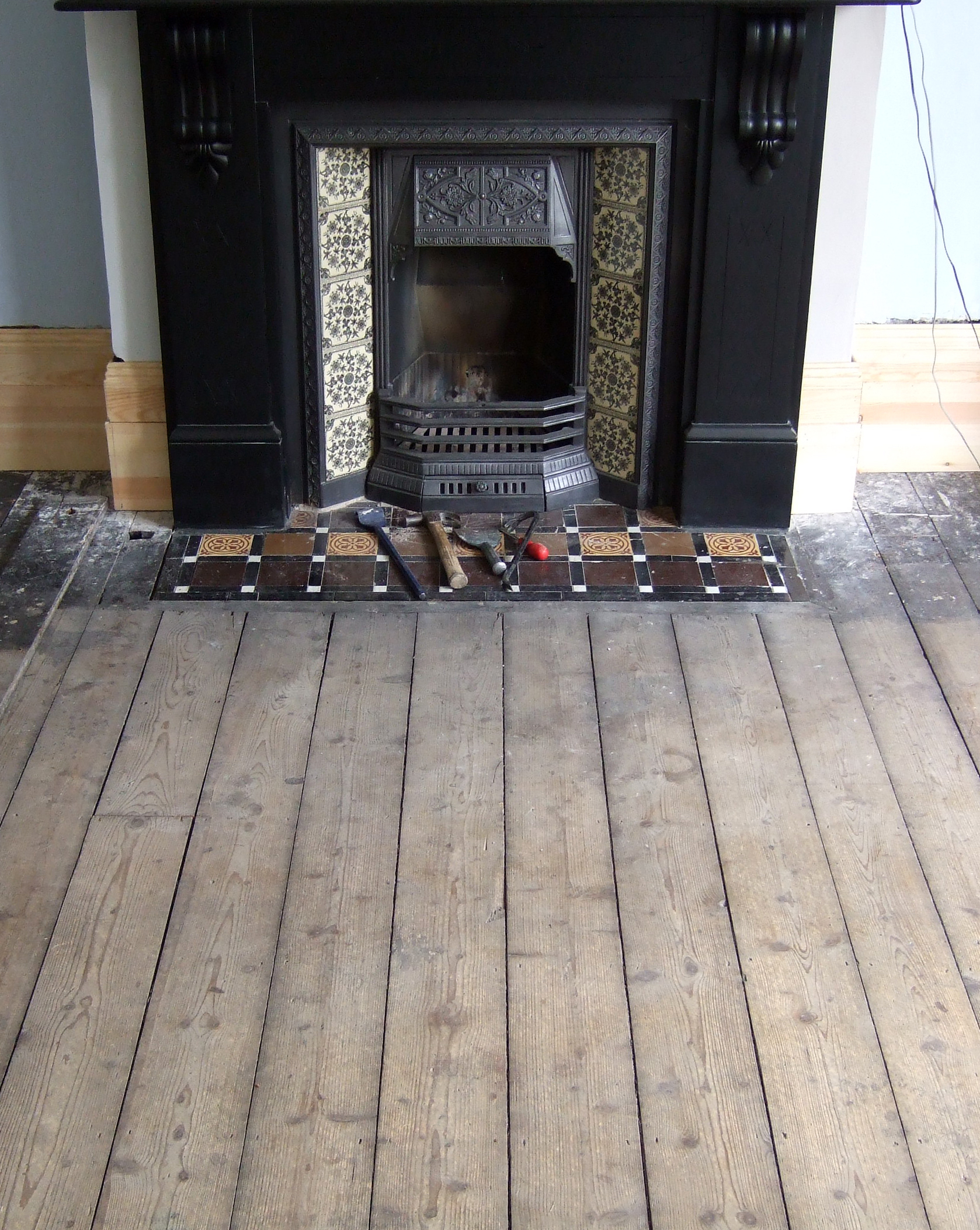“You should take the approach that you are wrong. Your goal is to be less wrong” Elon Musk

We sand all wood floors, pine, hardwood, old and new
Much of our work revolves around the sanding, repair and restoration of old pine floors. I have been French polishing full time since the early 1990s. Around 1995 I decided to become a self employed French polisher and to increase the scope of my work I started sanding floors from around the turn of the new millenium. Shortly after I started purchasing my own industrial machines as it was clear using hire machines was not compatible to doing my best work. My hunger for knowledge and constant improvement has not diminished as I approach my third decade in wood restoration.







Sanding Victorian pine floors
Sanding Victorian pine floors accounts for a lot of our work seeing as there are a lot of these properties in London but we also sand a lot of Edwardian pine floors. We therefore have a wealth of accumulated knowledge about how best to restore these floors involving, like most crafts, decades of trial and error, helped by a good grounding in profesional French polishing and commercial wood finishing. Ordinarily we sand Victorian and Edwardian floors with the larger belt sander as this is the most efficient.

We take take to remove as little material as possible to retain as much of the original patination and colour as possible as this is a large part of the beauty of old pine floors that distinguish them from newer faster grown wood floors.


Sanding Georgian pine floors
Although we can belt sand Georgian pine floors, the customer frequently chooses, often with our approval, to opt for a more gentler hand sanding approach. This takes a little more time and costs a little more but preserves more of the original character of the boards. Sometimes we lightly skim the floor using the larger machine but finish the job mostly with smaller hand machines, namely the Lagler Flip edge sander and Festool Rotex sanders all connected to dedicated dust extraction units. Many of the Georgian floors are in more central areas like Islington, Chelsea and the West End in the London area the rest being in the home counties and around the country.
If you have a Georgian period property you should seriously consider getting your floor sanded with care as replacement Georgian pine floor boards are now very rare and quite expensive, well in excess of one hundred pounds per square metre for decent timber. That is before you consider the preservation of the built environment and history of your property of which slow grown, virgin period timbers and high quality historical materials are a vital part.
Just like you cannot stick hair back on to a haircut that is too short, you cannot add back the timber and patination lost to unsympathetic work and unlike hair, floor boards do not grow back.


Sanding old period floors
We have a wealth of experience sanding very old floors typically ranging from three hundred to five hundred years old. From Queen Anne to Tudor floors, some of our floors have contained neolithic bog oak several thousand years old, we highly advise getting these sanded by hand and appraise our customers accordingly. We have developed many repair and restoration techniques for these older floors through imagination, trial and error and are always looking for ways to improve.
Sanding oak and other hardwood floors
Whilst much of our work revolves around older pine floors being a native wood oak floors come a close second. Many country floors are executed in oak, frequently cottages and older country properties were floored with local timbers being mostly English oak and elm which also make up the majority of the exposed beams in these types of properties which we too hand scrape, strip, restore and wax.






The key to sanding an oak floor is to use some sort of solvent finish as a barrier seal to stop the timber looking washed out. Often we apply a transparent shellac barrier seal to lighter and more modern oak strip floors whilst oak floors in cottages, wide board oak boards and reclaimed country style oak which we think looks the most interesting and pretty are often coated with a bespoke tinted shellac for greater depth and the appearance of age. It is vitally important on larger oak floors or cleaner crown cut strip oak to get the finish perfectly smooth as any imperfection shows up the same follows for maple floor sanding and other hardwoods such as ipe, meranti, mahogany, Burmese teak, Rhodesian teak, panga panga etc. All of which we have experience in sanding.








